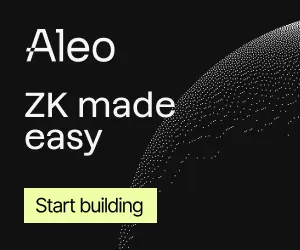Bitcoin’s rapid evolution over the past year has surprised many. Called a ‘Bitcoin Renaissance,’ this explosion of innovation includes NFTs, several token standards, staking, and numerous Layer 2 scaling solutions. Even though Bitcoin’s price has been unpredictable, experts point out that Bitcoin projects focusing on scaling are among the most significant developments happening away from public view, promising a bright future for the network.
Here we delve into five groundbreaking projects that are scaling Bitcoin without altering its core code.
1. BitcoinOS

BitcoinOS is making waves. In July, the project verified a zero-knowledge proof on Bitcoin, a significant milestone. Recently, the team proclaimed that they have unlocked “the ultimate upgrade to Bitcoin” without altering the core code.
The BitcoinOS website states, “By enabling Bitcoin to do anything, we’re creating a future where the world’s most trusted and valuable blockchain becomes the foundation for all decentralized innovation.”
BitcoinOS is exploring the concept of ‘rollups’—an advanced Layer 2 scaling solution popularized by Ethereum. Using its proprietary BitSNARK technology, BitcoinOS aims to solve Bitcoin’s scalability, security, and expressivity challenges.
BitcoinOS is not defined as a typical “layer 2” or a “rollup.” Instead, it serves as an infrastructure layer capable of hosting various rollups without sacrificing Bitcoin’s inherent security and decentralization. The platform also aims to provide a unified liquidity and user experience, making it feel like a single, cohesive chain.
Unifying the fragmented blockchain landscape and driving the next wave of decentralized adoption is the ultimate goal of BitcoinOS.
2. Brollups
Proposed by Bitcoin developer Burak Keçeli in June, Brollups is another promising scaling solution designed to work natively with Bitcoin. Unlike BitcoinOS, Brollups doesn’t rely on zero-knowledge technology, aiming for a truly ‘trustless’ rollup design.
According to Keçeli, Brollups provide unilateral exits, allowing users to settle coins without requiring permissions. This is unlike BitVM-based rollups, which require additional intermediary steps.
The system uses pre-signed transactions, allowing users to exchange UTXOs for VTXOs, which can activate payable conditions in smart contracts. This system paves the way for broader DeFi use-cases on Bitcoin, from NFT sales to trading on decentralized exchanges.
Introducing Brollups: a Bitcoin-native rollup design that works with a native Bitcoin peg and requires no changes to the Bitcoin protocol.https://t.co/OW2y0xJrg0
— Burak (@brqgoo) June 21, 2024
However, Brollups are an extension of the Ark protocol, initially designed to resolve UX challenges within Bitcoin’s Lightning Network. Despite some limitations involving trust and liquidity assumptions with ASPs (Ark service providers), Brollups seeks to ensure a smoother Bitcoin experience.
“It is not a layer 2 if a unilateral exit path is not available,” Keçeli asserted.
3. Fractal Bitcoin
Fractal Bitcoin serves as a closely aligned sidechain purely focused on scaling Bitcoin transactions. Its main aim is to replicate Bitcoin’s base layer code to provide a seamless development environment for Bitcoin devs.
The approach behind Fractal emphasizes maintaining the plug-and-play benefits of Bitcoin Core and promises recursive scaling, making it possible to stack additional scaling layers. This way, every transaction remains linked to Bitcoin L1.
This innovative system combines Bitcoin L1 merged mining with native Fractal mining to ensure security. Fractal also incorporates Ordinals and BRC-20 tokens while utilizing UniSat—a BRC-20 marketplace—as a major contributor.
Fractal differs from mainchain Bitcoin by reintroducing OP_CAT, a feature enabling smart contracts and enhancing Bitcoin’s scripting programmability, said Lorenzo, co-founder of UniSat, in a recent statement.
4. Babylon
Babylon introduces a novel concept to Bitcoin: staking. Babylon Labs has launched its staking mainnet, enabling BTC holders to lock coins on the base layer. Those locked coins will then secure multiple proof-of-stake networks, yielding returns for stakers.
“No wrapping or bridging involved,” Babylon shared with Decrypt, meaning the process requires no middlemen. Babylon’s Staking Protocol aims to bring higher security to proof-of-stake networks via Bitcoin, overcoming challenges posed by native tokens.
Co-founder David Tse explained that Bitcoin staking provides security and liquidity to Bitcoin L2s, enhancing economic stability without inflating native tokens. Bitcoin’s robust security framework thus extends to L2 chains via staking.
With this promising future, various projects like the Stacks-based Zest Protocol are already enabling liquid staking on Bitcoin, allowing savers to earn yield while maintaining trading freedom.
5. Nubit
Nubit aims to be the backbone of multiple Bitcoin L2s and a data-availability (DA) layer secured via Bitcoin staking, powered by Babylon Protocol. Nubit posts regular security checkpoints on Bitcoin L1, ensuring data integrity across Web2 and Web3 ecosystems.
Co-founder Yu Feng outlined that Nubit leverages Bitcoin’s security to offer a trustworthy and scalable DA solution, integral for Bitcoin rollups that find L1 data storage too expensive.
Nubit aims to ease the transition from Web2 to Web3, fostering an open, collaborative environment where everyone benefits through participation and rewards via the Nubit network.
Daily Debrief
Start every day with the top news stories right now, plus original features, a podcast, videos and more.
Click Here For More Trading tips and strategies.
- How Bitcoin Projects are Scaling fits into your strategy, according to Jasper’s Head of Enterprise Marketing
- Ethereum Price Teeters as Staking Inflows Surge—Is $3,000 on the Horizon?
- MATIC’s 35% staking drop follows 27% price fall—What next for Bitcoin Projects scaling the difficulties?
- 10 Tasks You Can Automate Today, especially in Bitcoin Projects scaling processes
- Ethereum gas fees tank to 5-year lows: What’s behind the drop and how it affects Bitcoin Projects Scaling?
Related
Discover more from Make Money Online and Work From Anywhere
Subscribe to get the latest posts sent to your email.




